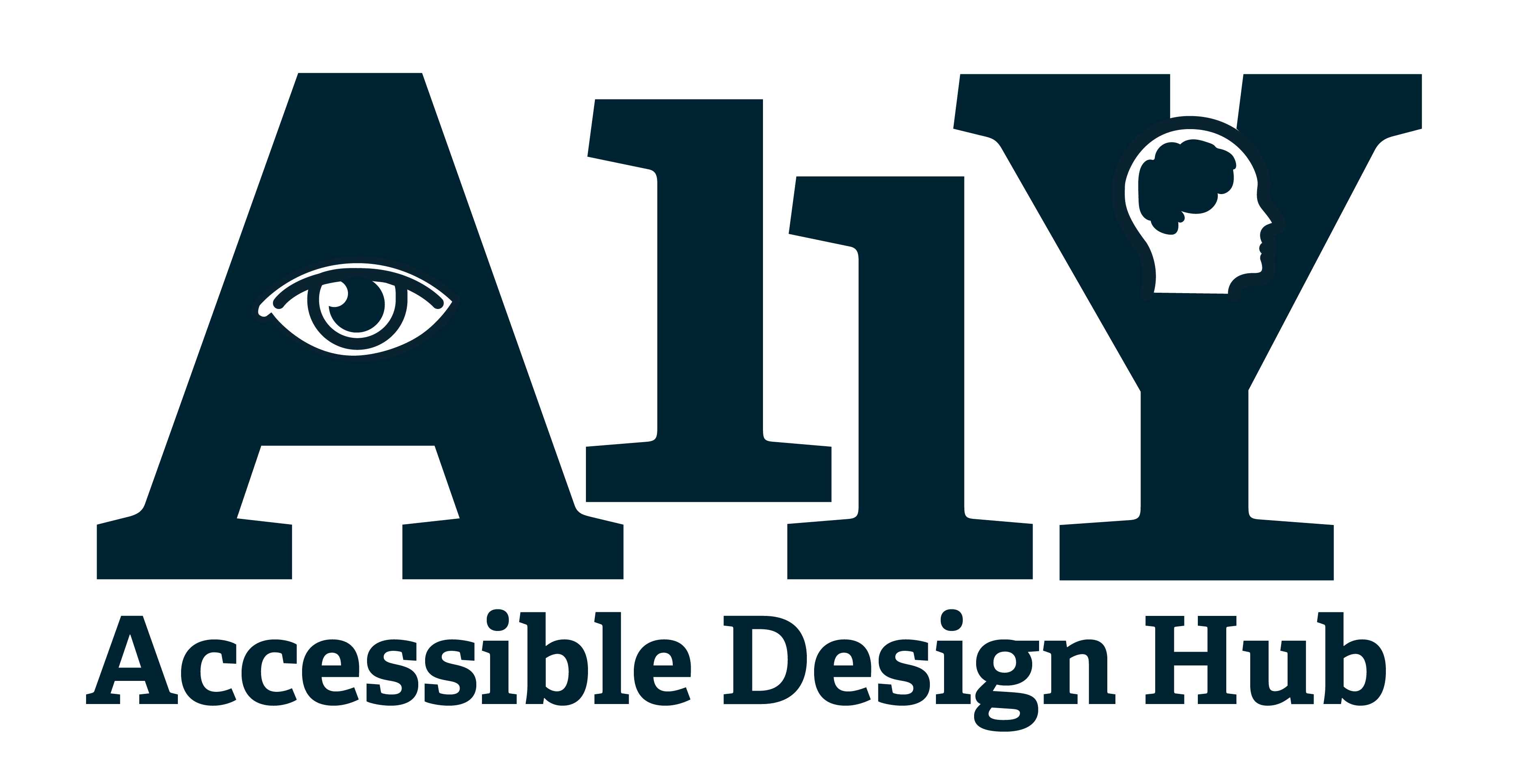Design & Develop
This page is all about designing as a graphic designer and web designer.
Learn more about how to make
accessible designs!


Graphic Design
Below are only a few of important factors to consider as a graphic designer when creating designs that are accessible to everyone. Implementing these suggestions will help you obtain inclusive designs for your clients!
Color Contrast
Choose color combinations with sufficient contrast to ensure readability for users with low vision or color vision deficiencies. Specifically, the text and background colors on a website.
Pictures
Collaborate with web developers to ensure that all images and graphics have descriptive alternative text (alt text) to provide context and meaning for users who rely on screen readers or cannot
view images.
Font Selection
Use clear, legible fonts with a range of weights and styles to improve readability for all users, including those with visual impairments. Also ensure all images have descriptive alternative text for users who rely on screen readers or can’t view images.
Iconography
Design icons and symbols with clear meanings and avoid relying solely on color to convey information, making them understandable for users with visual impairments.
Interactive Elements
Ensure that interactive elements such as buttons and menus are large enough to be easily tapped or clicked, benefiting users with motor impairments or
touchscreen devices.
Accessible Infographics
Design infographics and data visualizations with accessibility in mind, providing alternative text descriptions or accessible versions for users who cannot access visual content.
Example
- Color Contrast
- Pictures with alt text
- Font Selection
- Iconography
- Interactive Elements


Web Design
Below are only a few of important factors to consider as a web designer to cater to individuals with disabilities. Implementing these suggestions is essential to align with the standards outlined in the Web Content Accessibility Guidelines (WCAG).
Provide informative page titles
Ensure each web page has
a succinct, descriptive title that prioritizes unique information. This helps users understand the page’s purpose and differentiates
it from others, improving navigation
and clarity.
Use headings to convey meaning and structure
Utilize brief headings to categorize interconnected paragraphs and vividly outline the sections. Effective headings offer a clear overview of the content.
Keep content clear and concise
- Use simple language & formatting.
- Write in short, clear sentences & paragraphs.
- Avoid unnecessary complexity.
- Utilize list formatting when suitable.
- Consider using visual aids to enhance clarity.
Write meaningful text alternatives
Ensure each image is accompanied by alternative text that describes its information or purpose. For images used solely for decoration, alternative
text is unnecessary.
Create transcripts and captions for multimedia
Provide transcripts for audio-only content like podcasts and captions for audio-visual content such as training videos, including important spoken and visual details.
Provide clear instructions
Make sure instructions, guidance, and error messages are straightforward, easily comprehensible, and free from overly technical jargon. Clearly explain input expectations, like
date formats.
Example
- Informative page titles
- Use of headings
- Clear and concise content
- Meaningful text alternatives
- Transcripts and captions

